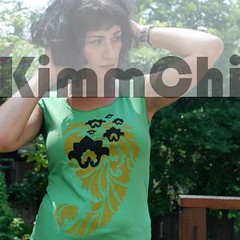Sculptural Jewelry by Art Smith
Fluid. That’s one of the many words that come to mind when you look at the jewelry of Art Smith (1917-1982). He was able to create impactful, yet very simplistic modern jewelry that still looks current today.
Smith used various methods to create his flowing jewelery and I as a jeweler use most of the same processes, like soldering and forming.
I am inspired by Smith’s work, which is somewhat similar to mine. Simple shapes and silhouettes are what define both of our work. Strong texture and stones accompany my work, his with wire and graceful movement.
The tools that Art used in the middle of last century are still being used by jewelers today. I probably used the same forming tools to create my newer sculptural necklaces. I know for sure that we have the same processes - rough sketches on pieces of paper, followed by trail and error, which finally leads to a dynamic piece of jewelery that looks like just what we were thinking!
For most of his pieces he used wire or sheets of metal that he then drew designs on and cut out with a jewelers saw. The time consuming technique of forming the metal to the perfect shape is evident in his finished items, which hang like mobiles from the wearer's neck. He also soldered stone settings,like bezels, onto his pieces and then hand set many precious stones, including amethyst,lapis and emeralds. Other times he just formed the metal and let the forms and shapes speak for themselves.
I love that we are both lovers of the metal first, then the stones. I do not use many stones in my jewelry, but when I do it is subtle but creates a pop, much like Art's jewelry. One of my newer creations deals with form and the chest. I wanted to created a bold but simple chest piece with movement. This piece was formed from wire, which was then soldered onto brass sculptured castings and plated with 22kt gold.
Another piece that draws inspiration from Art is my Fang Necklace, which draws upon ancient tribal jewelry. Like Art, I use stones to emphasize the gold and movement of the texture of the jewelry.
Art Smith continues to inspire designers and novices alike with his playful, functional wearable art. Please don't miss out on seeing the amazing jewelry of Art Smith at the Brooklyn Museum. By popular demand, the exhibit, which was set to close in 2009 has been extended and is now housed as a long term installation. There is no excuse to miss this!!
Alicia
Lingua Nigra Jewelry
I am inspired by Smith’s work, which is somewhat similar to mine. Simple shapes and silhouettes are what define both of our work. Strong texture and stones accompany my work, his with wire and graceful movement.
The tools that Art used in the middle of last century are still being used by jewelers today. I probably used the same forming tools to create my newer sculptural necklaces. I know for sure that we have the same processes - rough sketches on pieces of paper, followed by trail and error, which finally leads to a dynamic piece of jewelery that looks like just what we were thinking!
For most of his pieces he used wire or sheets of metal that he then drew designs on and cut out with a jewelers saw. The time consuming technique of forming the metal to the perfect shape is evident in his finished items, which hang like mobiles from the wearer's neck. He also soldered stone settings,like bezels, onto his pieces and then hand set many precious stones, including amethyst,lapis and emeralds. Other times he just formed the metal and let the forms and shapes speak for themselves.
I love that we are both lovers of the metal first, then the stones. I do not use many stones in my jewelry, but when I do it is subtle but creates a pop, much like Art's jewelry. One of my newer creations deals with form and the chest. I wanted to created a bold but simple chest piece with movement. This piece was formed from wire, which was then soldered onto brass sculptured castings and plated with 22kt gold.
Another piece that draws inspiration from Art is my Fang Necklace, which draws upon ancient tribal jewelry. Like Art, I use stones to emphasize the gold and movement of the texture of the jewelry.
Art Smith continues to inspire designers and novices alike with his playful, functional wearable art. Please don't miss out on seeing the amazing jewelry of Art Smith at the Brooklyn Museum. By popular demand, the exhibit, which was set to close in 2009 has been extended and is now housed as a long term installation. There is no excuse to miss this!!
Alicia
Lingua Nigra Jewelry








